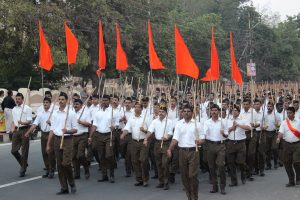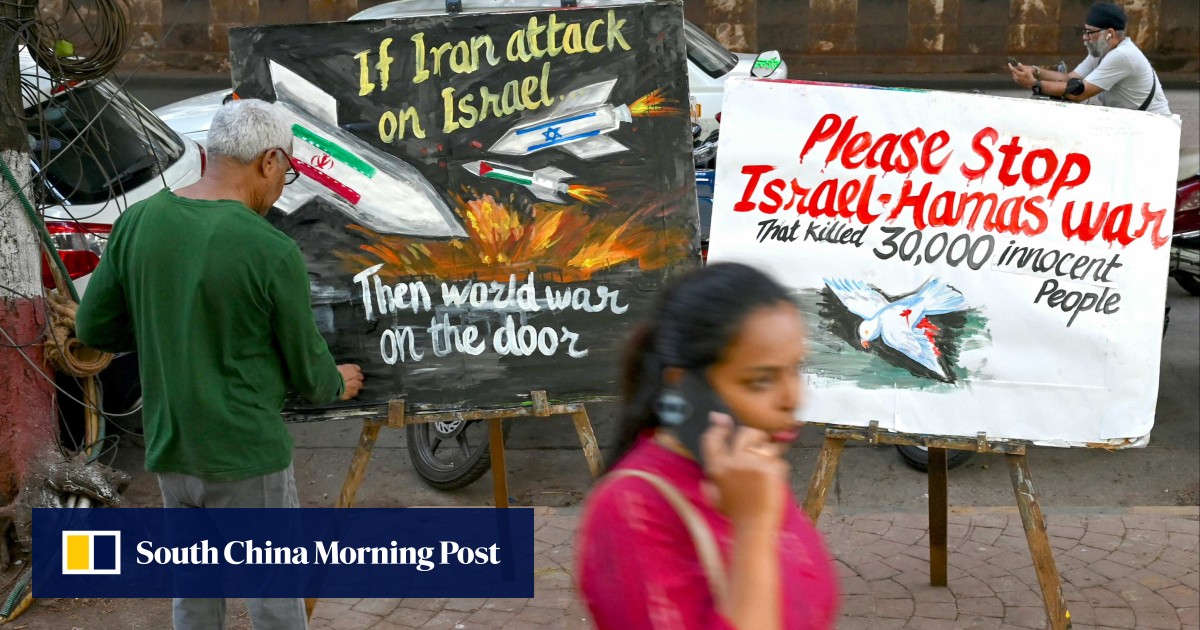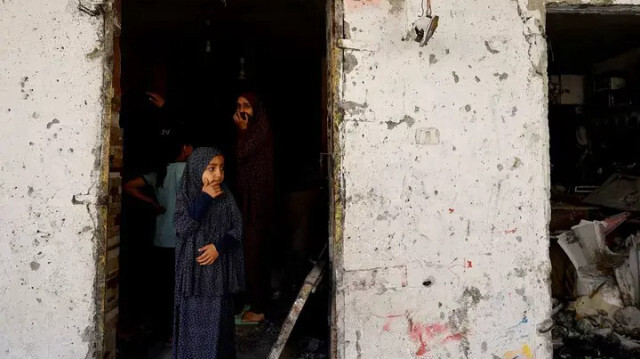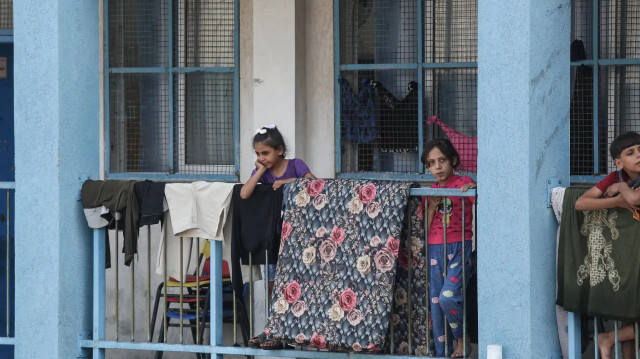
BY ISMAT ARA
MAY 31, 2024 9:14 AM EDT
Ismat Ara is a New Delhi-based journalist. She covers politics, crime, gender, culture and environment.
More than two years have passed since a picture of me, picked up from my personal social media handles, was put up with a price tag for auction on the internet. It was part of a website called Bulli Bai, a religious slur used for Muslim women in India.
Why was I targeted? Likely because of my reporting. The perpetrators wanted to shame and humiliate a journalist who was determined to expose the failures of the ruling Hindu nationalist Bharatiya Janata Party’s gender, caste, and religion-based violence. But more importantly, they wanted to shut up a Muslim woman who had dared to be vocal in Modi’s India.
When the photo was posted, I wondered how the main perpetrator, a 21-year-old student from Assam, who created Bulli Bai could be so consumed by his hatred that he felt compelled to auction Muslim women online for their outspoken criticism of the BJP—journalists, social workers, actors, and politicians. A recent meeting with my lawyer about my case against the Bulli Bai creators, who are still being investigated by the Delhi police, was a painful reminder of the targeted harassment faced by outspoken Muslim voices critical of the ruling BJP.
As the ongoing election in India is set to finish on June 1, it has once again offered deeper insight into how political dialogue is fueling this culture of hate.
Particularly, the political campaign of Prime Minister Narendra Modi’s BJP has leaned into anti-Muslim sentiment, progressively making Islamophobia one of the defining features of this election.
It was most prominently on display when Modi, in a thinly veiled reference to Muslims, referred to the 200 million Indian Muslim population as “infiltrators” at a BJP campaign rally while addressing voters in the Western state of Rajasthan on April 21. The Prime Minister also accused the opposition Congress party of planning to distribute the country’s wealth to Muslims.
Modi, in his speech, asked, “Earlier, when his [ former Prime Minister and Congress Party member Manmohan Singh’s] government was in power, he had said that Muslims have the first right on the country’s property, which means who they will collect this property and distribute it to—those who have more children, will distribute it to the infiltrators. Will the money of your hard work be given to the infiltrators? Do you approve of this?”
Read More: How India’s Hindu Nationalists Are Weaponizing History Against Muslims
This 2006 statement by former Prime Minister Manmohan Singh emphasizing that minorities, particularly Muslims, should have the first claim on resources to help uplift their socio-economic status, has been often quoted out of context in political rhetoric, distorting its original intent to uplift marginalized communities.
The reemergence of conspiracy theories like “Love Jihad,” alleging a covert agenda by Muslim men to ensnare and convert Hindu women, by Modi, has surged back into public attention, prominently surfacing at an election rally on May 28, days before the seventh and last phase of the ongoing elections, in the Eastern state of Jharkhand.
The alarming rhetoric about Muslim population growth too have dominated the election discourse, fueled by the BJP's top leader, Modi, who has been criticized for his Islamophobic remarks, evoking memories of Gujarat's 2002 riots. While he later denied singling out Muslims in an interview with an Indian news channel, his history of linking them to population growth fuels a Hindu-majoritarian conspiracy theory.
Following the 2002 anti-Muslim riots in Gujarat during his tenure as chief minister, Modi faced scrutiny regarding his administration's lack of assistance to relief camps, predominantly established by non-profit organizations and Muslim communities. During a campaign rally, Modi then insinuated that these camps might transform into "baby factories," implying that Muslims could potentially have families as large as 25 children.
In his Jharkhand rally in May of this year, Modi spoke of "unseen enemies" working to divide society and claimed that the opposition parties were playing into the hands of “infiltrators”. He warned against "Zalim (cruel) love," alluding to Love Jihad.
As the elections progressed, Modi’s speeches transformed slowly from issues such as “development” to anti-Muslim rhetoric. Unlike previous elections, Modi's campaign strategy this time has shifted towards overt Hindu-Muslim politics, drawing attention to his past record and raising concerns among Indian Muslims, as evidenced by the Election Commission's intervention in a campaign video by the BJP inciting hatred against Muslims.
The video, shared by BJP Karnataka wing with a cautionary message in Kannada, depicted a cartoon version of Congress’s Rahul Gandhi placing an egg marked "Muslims" into a nest alongside smaller eggs labeled with categories such as "Scheduled Castes," "Scheduled Tribes," and "Other Backward Castes.” The narrative unfolds as the "Muslim" hatchling is shown being nourished with financial resources, eventually growing larger and displacing the other hatchlings from the nest—implying that a Congress government will give away all resources to Muslims.
This came days after another animated video shared by the BJP’s official Instagram handle was removed on May 1 after a large number of users of the platform reported the video for “false information” and “hate speech.” The video repeats the BJP’s rhetoric on the Congress party, who they allege are“empowering people who belong to the very same community [of] invaders, terrorists, robbers and thieves [who] used to loot all our treasures” while the voice-over says, “If Congress comes to power, it will snatch all the money and wealth from non-Muslims and distribute them among Muslims, their favorite community.”
Despite its controversial content, the video amassed over 100 thousand likes before being removed.
Both videos come after claims by Modi during his campaign speeches that Congress was planning to “steal” reservations in educational institutes and government jobs among other benefits from Scheduled Castes, Scheduled Tribes, and Other Backward Castes and redistribute them to Muslims.
Modi may be the foremost leader, but he's not alone in setting the tone; other top-tier BJP leaders are also walking in his footsteps. Home Affairs Minister Amit Shah's remarks linking voting for the Congress party to "jihad" in the South Indian state of Telangana have also stirred controversy.
Read More: The Modi-fication of India Is Almost Complete
The India Hate Lab, a Washington D.C.-based group that documents hate speech against India’s religious minorities, in its report of 2023 paints a grim picture of rising hate speech incidents against Muslims, totaling 668 documented cases.
These incidents, often featuring calls for violence and spreading divisive theories, were predominantly concentrated in regions governed by the BJP, particularly during key election periods like in Rajasthan, Madhya Pradesh, Telangana, and Chhattisgarh. Additionally, the report highlighted stark differences in hate speech content between BJP and non-BJP-governed areas, with BJP leaders more frequently involved in non-BJP territories as they strive to expand political footholds.
When leaders resort to fear-mongering, it legitimizes the dehumanization of minorities, creating a fertile ground for extremists. This often isn’t just about one app or incident. It’s about the pervasive atmosphere of intolerance that such rhetoric by the BJP leaders breeds. And those who oppose this type of hate speech want to ensure that no one—regardless of their faith, gender, or caste—has to live in fear of being targeted for who they are.
Modi’s statement received widespread criticism from the opposition, the intelligentsia community including authors, writers, scholars, academics, and the minority Muslim population of India. The Congress party even filed a complaint with the Election Commission, alleging that Modi's remarks violate electoral laws that prohibit appeals to religious sentiments. Despite public outcry and demands from activists and citizens for action, the Election Commission has so far taken no appropriate action.
Modi's Islamophobic statements, which have fueled fears over and over again among India's Muslim population, must be viewed within the broader context of his party's strategies—which often invoke religious and communal sentiments to galvanize their voter base. And this time, the aim is to break all previous records by securing 400 plus seats in the 543 seat parliament.
If the BJP is able to secure such a huge majority in the parliament, Hindu majoritarianism will remain unchecked. The hostility towards the minorities could escalate even more, and opposition parties may bear the brunt of state agencies and crackdowns if they ask questions.
During Modi’s previous terms, Muslims have seen an increased marginalization and discrimination fueled by Hindu nationalist agendas—ranging from difficulty in securing a rented accommodation in urban cities, erasure of Muslim names from roads, cities and railway stations, to the underrepresentation in government jobs and discrimination and vandalism of shops of small Muslim vendors.
Today, India, a country which once took pride in its ganga-jamuni tehzeeb—a term used to refer to the fusion of Hindu-Muslim cultures—has become a global epicenter of divisive politics. While elections will come and go, the impact of the irresponsible words of Modi and the BJP will stay with the 200 million plus Muslims in the country.
These words have real and dangerous implications for the safety and security of India's Muslim population. Muslims in India currently face increased social ostracism, economic boycotts, and even physical violence. And another victory with an overwhelming majority will only mean more trouble.













